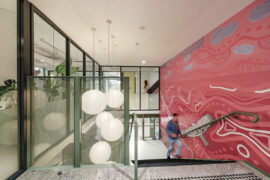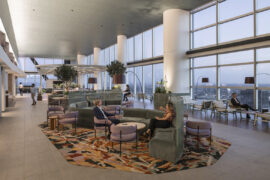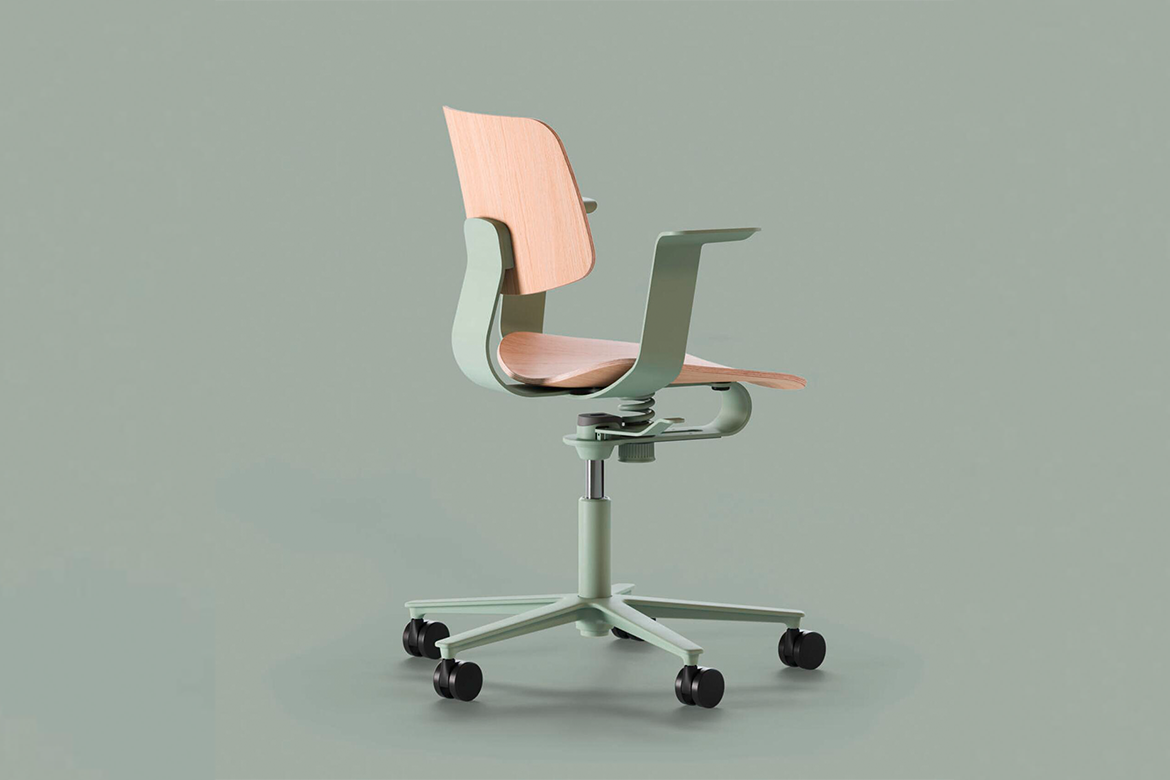To be housed in the 1460 armoury building Sale d’Armi in Arsenale, Venice, this year’s Singapore Pavilion responds to the 18th International Architecture Exhibition’s theme — The Laboratory of The Future — but taking the form of a giant evolving machine that seeks to understand our true desires for how we live in the city.

The centrepiece of the pavilion is a Values Measurement Machine, a spectacular series of analogue plotting machines that mark data on 5-metre tall calligraphic scrolls that are constantly moving
May 12th, 2023
Running from 20 May to 26 November, this years Venice Architecture Biennale features the Singapore installation entitled “WHEN IS ENOUGH, ENOUGH? The Performance of Measurement”. It’s curated by Singapore Institute of Architects President Ar. Melvin Tan, with council member and architect extraordinaire Ar. Adrian Lai, whose work includes Khong Guan Building (with Meta, 2018), Gardens by the Bay in Singapore, Bridge Learning Campus in Bristol, and Guangzhou International Finance Centre in China (with Wilkinson Eyre, 2005-2012). They are joined by fellow council member Ar. Wong Ker How, founding partner of ASOLIDPLAN and superstar of contemporary residential Singaporean architecture.
The pavilion aims to open up dialogue about new ways of measuring and evaluating the intangibles we design to – attributes such as agency, attachment, attraction, connection, freedom, and inclusion – and asks in particular: how much is enough?

Taking the premise established by Louis Kahn — “a great building, in my opinion, must begin with the unmeasurable, go through measurable means when it is being designed, and in the end must be unmeasurable” — the curators have devised the centrepiece of the pavilion as a Values Measurement Machine. Comprising a spectacular series of analogue plotting devices that mark data on 5-metre tall calligraphic scrolls, which are constantly in motion, the machine asks the question. In building a lovable city, how do we measure the unmeasurable — agency, attachment, attraction, connection, freedom, inclusion?
To help answer, visitors to the pavilion are invited to respond to six questions around the intangible elements of the city and reflect on the qualities that can transform the urban landscape beyond a human-orientated city to a worldly, lovable one. Navigating through a spectrum of artistic renders, visitors will pinpoint the critical balance of qualities to evoke their desired habitat, weighing up their preferences and registering these values.
Related: Trent Jansen’s Venice residency

This act of weighing and registering values will form the body of the artwork, with the collected data plotted on the large calligraphic scrolls, in a real-time display of consensus and contradiction that takes place over the six months of the Biennale Architettura 2023.
Accompanying the machine are exhibits containing 41 other questions. Each of these invite visitors to pause and learn more about the research of architectural practices involved in the pavilion. Their work on measuring intangibles, while designing for issues such as dementia and neurodiversity, rewilding, biodiversity, nutrition, and biomimicry ecosystems will form the focus of these explorations.

The set of exhibits and questions was created in collaboration with architects and researchers whose practices deal with agency, attachment, attraction, connection, freedom in the city and inclusion. In examining design processes that work for these six goals, the Singapore Pavilion uncovers challenges and contradictions, and brings to light methods of addressing diverse preferences and the conundrums that arise.
The 2023 Singapore Pavilion was co-commissioned by the Urban Redevelopment Authority (URA) and the DesignSingapore Council (Dsg), and organised by the Singapore Institute of Architects (SIA).
Venezia Biennale Architettura 2023
labiennale.org
Urban Redevelopment Authority
ura.gov.sg
Design Singapore Council
designsingapore.org
Singapore Institute of Architects
sia.org.sg
We think you might also like this story on Burnt Ends in downtown Singapore.
INDESIGN is on instagram
Follow @indesignlive
A searchable and comprehensive guide for specifying leading products and their suppliers
Keep up to date with the latest and greatest from our industry BFF's!

Merging two hotel identities in one landmark development, Hotel Indigo and Holiday Inn Little Collins capture the spirit of Melbourne through Buchan’s narrative-driven design – elevated by GROHE’s signature craftsmanship.

For those who appreciate form as much as function, Gaggenau’s latest induction innovation delivers sculpted precision and effortless flexibility, disappearing seamlessly into the surface when not in use.

CDK Stone’s Natasha Stengos takes us through its Alexandria Selection Centre, where stone choice becomes a sensory experience – from curated spaces, crafted details and a colour-organised selection floor.

At the Munarra Centre for Regional Excellence on Yorta Yorta Country in Victoria, ARM Architecture and Milliken use PrintWorks™ technology to translate First Nations narratives into a layered, community-led floorscape.

From radical material reuse to office-to-school transformations, these five projects show how circular thinking is reshaping architecture, interiors and community spaces.

Designed by Woods Bagot, the new fit-out of a major resources company transforms 40,000-square-metres across 19 levels into interconnected villages that celebrate Western Australia’s diverse terrain.

In an industry where design intent is often diluted by value management and procurement pressures, Klaro Industrial Design positions manufacturing as a creative ally – allowing commercial interior designers to deliver unique pieces aligned to the project’s original vision.
The internet never sleeps! Here's the stuff you might have missed

Located in the former Madam Brussels rooftop, Disuko reimagines 1980s Tokyo nightlife through layered interiors, bespoke detailing and a flexible dining and bar experience designed by MAMAS Dining Group.

True sustainability doesn’t have to be complicated. As Wilkhahn demonstrate with their newest commercial furniture range.